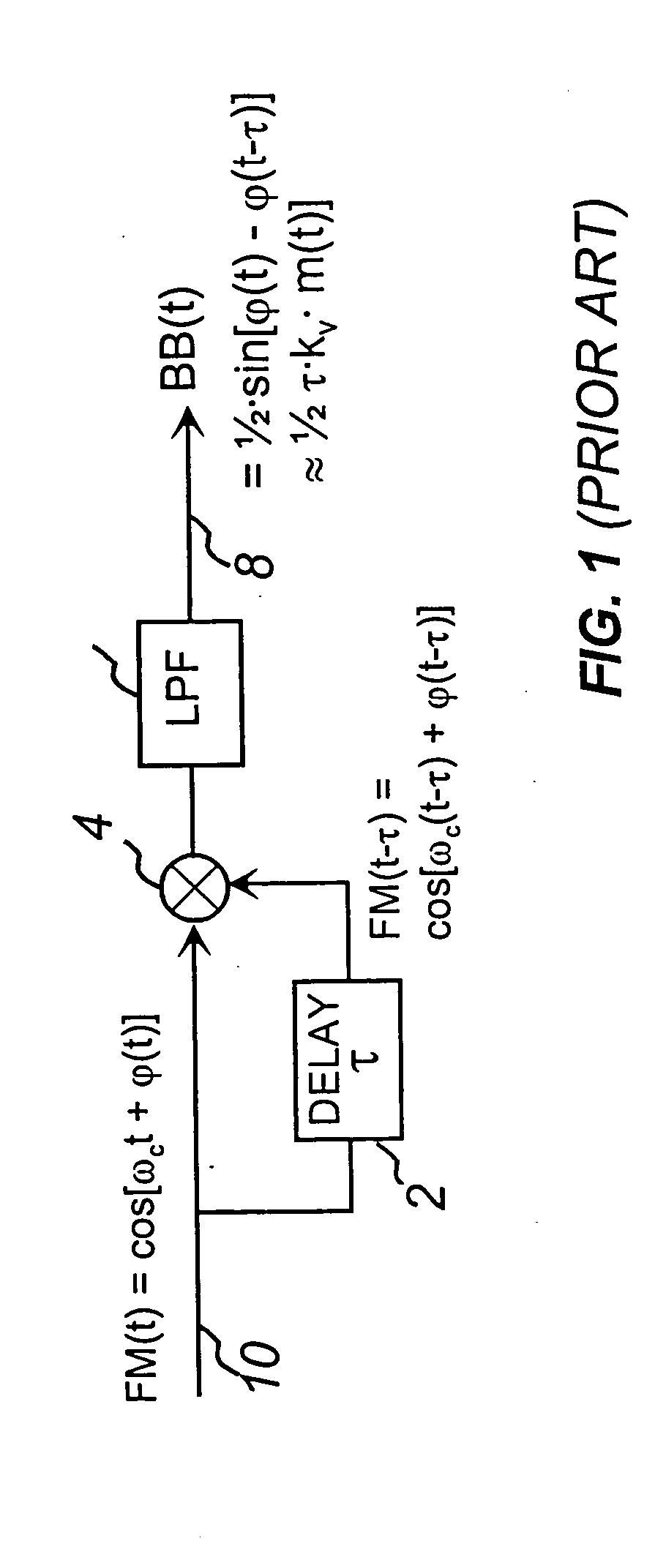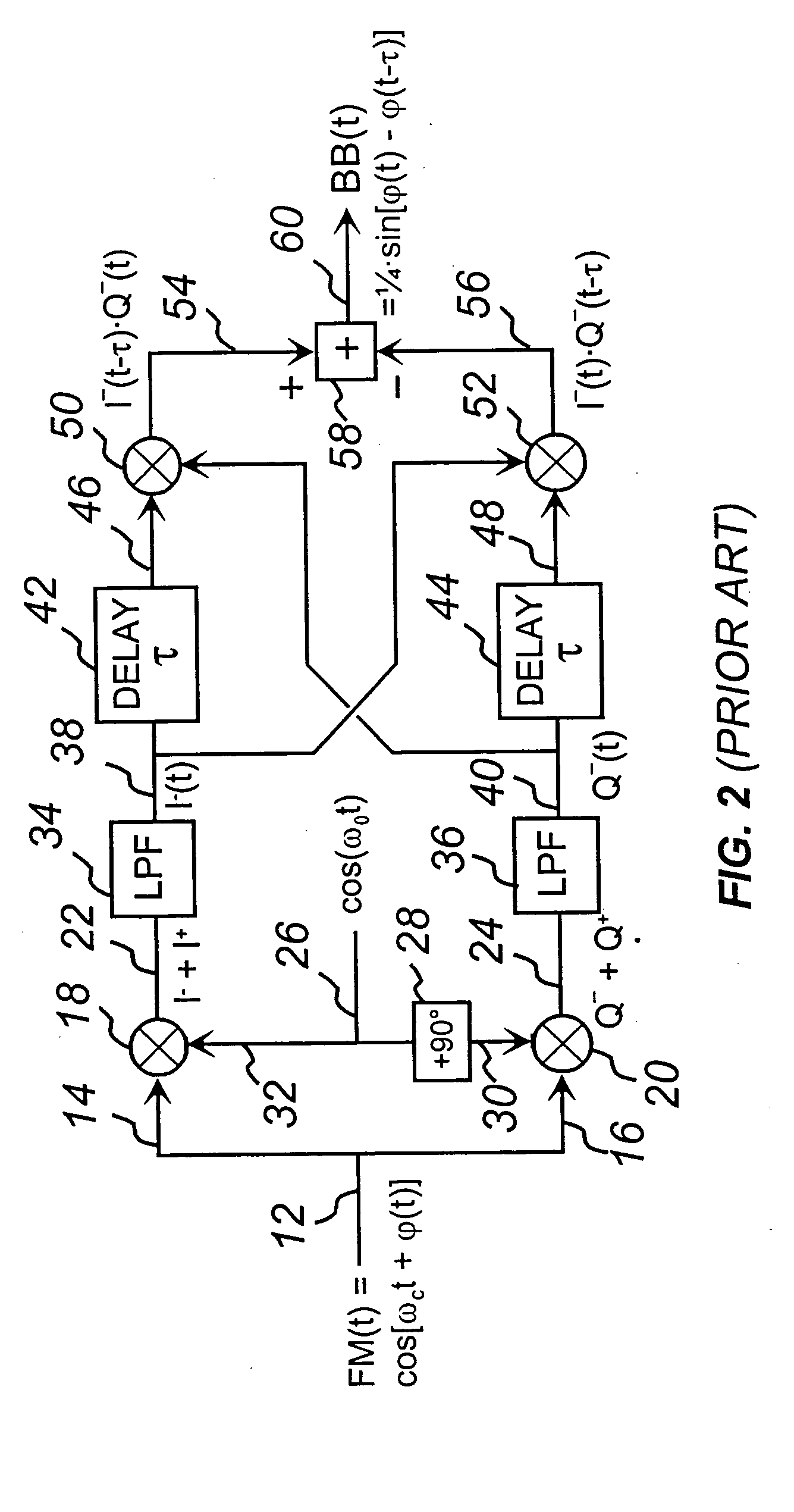Zero if complex quadrature frequency discriminator & FM demodulator
a frequency discriminator and complex quadrature technology, applied in the field of frequency discriminators (fd) and frequency modulators (fm) demodulators, can solve the problems of limiting the phase noise performance of the phase noise of the synthesizer, affecting the frequency response of the synthesizer, so as to facilitate frequency agile operation, improve the phase noise performance, and simple design
- Summary
- Abstract
- Description
- Claims
- Application Information
AI Technical Summary
Benefits of technology
Problems solved by technology
Method used
Image
Examples
Embodiment Construction
[0062] To overcome the problem encountered in the prior art in FIG. 2 of having to filter with low pass filters both the I and Q arms, a complex single side-band (SSB) down-conversion to zero IF using in-phase (I) and quadrature signal (Q) shifted by 90° can be used, as shown in one embodiment of the demodulator of the present invention in FIG. 3. The SSB mixing (also known as image rejection mixing) of two frequencies produces only one dominant frequency, equal to either the sum or the difference of the two frequencies, depending upon which sideband (upper or lower) is produced, which in turn is the function of the phasing of the quadrature components of the two frequencies. The complex SSB down-converter used in the present invention utilizes two sets of SSB mixers—one to produce the in-phase LSB signal, and the other to produce the quadrature LSB signal.
[0063] For complex SSB mixing, quadrature signals (0° and 90° phase signals) of both FM and LO signals are required. To obtain ...
PUM
 Login to View More
Login to View More Abstract
Description
Claims
Application Information
 Login to View More
Login to View More - R&D
- Intellectual Property
- Life Sciences
- Materials
- Tech Scout
- Unparalleled Data Quality
- Higher Quality Content
- 60% Fewer Hallucinations
Browse by: Latest US Patents, China's latest patents, Technical Efficacy Thesaurus, Application Domain, Technology Topic, Popular Technical Reports.
© 2025 PatSnap. All rights reserved.Legal|Privacy policy|Modern Slavery Act Transparency Statement|Sitemap|About US| Contact US: help@patsnap.com



